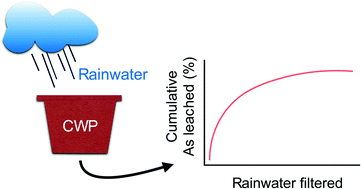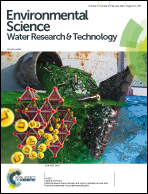Arsenic leaching from ceramic water filters
Abstract
Ceramic water filters (CWFs) provide a low-cost and effective means of pathogen removal for drinking water and are an attractive water treatment option because they can usually be manufactured without the need for imported materials. However, variation in the chemical composition of materials used for CWF production, especially in source clay, provides a potential hazard to CWF users through leaching of arsenic into filtered water. We determined the chemical composition of source clay material, and then evaluated the extent of arsenic leaching from CWFs manufactured in Kandal Province, Cambodia. Arsenic leaching from CWFs is rapid and non-linear, resulting in initial filtrate arsenic concentrations more than 100 times the World Health Organization recommended limit for safe drinking water (10 μg L−1). Under typical operating conditions in Cambodia, we determined that each CWF will leach approximately 43.5 mg of As, but that 80% of the As is released in the first 100 L of water. Arsenic desorption tests performed on source clay indicated that the ceramic firing process drastically increases the leachability of arsenic compared to unfired clay in the region. Testing of fired CWF material, not only source materials, is essential to predict arsenic leaching. Competitive desorption did not increase the release of arsenic from fired CWF materials as phosphate-dosed water in contact with CWF material showed no significant effect on arsenic release. We conclude that CWF arsenic leaching poses a potential exposure to end-users but because leaching occurs rapidly, design of controlled leaching systems prior to product distribution can mitigate arsenic exposure.



 Please wait while we load your content...
Please wait while we load your content...